Showing 13–24 of 103 results

This book is a collection of the stutis (chalisas) of Lord Ganesh, Hanuman, Shani, Batuk Bhairav, Siva, Krishna at one end and Goddess Lakshmi, Durga, Vindhyeshvari, Gayatri, Sarasvati at the other. All these chalisas in a single book makes it unique.
This book is a collection of the stutis (chalisas) of Lord Ganesh, Hanuman, Shani, Batuk Bhairav, Siva, Krishna at one end and Goddess Lakshmi, Durga, Vindhyeshvari, Gayatri, Sarasvati at the other. All these chalisas in a single book makes it unique.
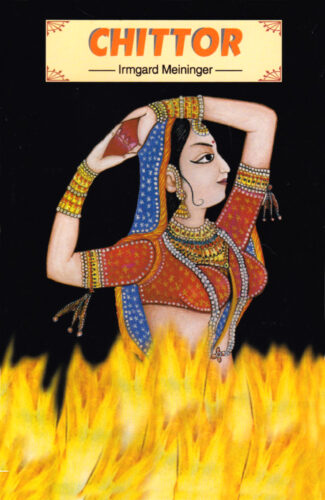
It presents the history and culture of Rajasthans greatest fortified citadel and Mewars ancient capital, Chittorgarh. It narrates the heroic sagas of its warriors and describes its beautiful palaces, temples and lakes.
Every region/community of the world has its sahre of oral creativity, in varying measures though. And, accordingly, has its own legacy of chanted narratives: epical, hostorical, mythical, romantic, or even ritualistic. Which have long survived in the collective memory of its people, having been handed down from generation to generation. Confronted, however, by the cornucopian techno-centrism of todays life, these oral narratives are on their way out everywhere like many other vibrant cultural phenomena. Highlighting why we need to preserve this intangible heritage of mankind, the volume offers a fascinating study of chanted narratives from different regions of India and parts of Southeast Asia. Essentially a multi-author work, it explores the nature of orality and its various attendent aspects, like composition, performance, transmission modes, socio-economic context, and the relationship that exists between its performer and the audience. Also addressing methodological issues concerning the existing definitions and terminologies, the authors argue for a paradigm shift in the academic discourse on orality and oral cultures. Carrying twenty four contributors of leading scholars from France, Germany, India, Indonesia, Italy, Nepal, New Zealand, Sri Lanka and UK, the book not only provides theoretical insights into the complex nature of orality, but sets out a rich repertoire of chanted narratives as well. Folklorists, anthropologists, historians and scholars of Indian cultures will find it a useful acquisition.
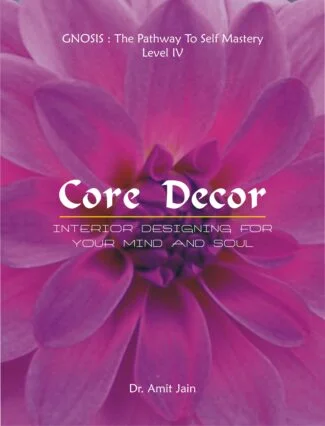
The book is a call for developing values of the soul rather than the moral values one has grown with. It provides a deeper understanding of the psychology of human behaviour and talks about three kinds of love sexual, emotional and conscious. It also reveals the esoteric exercises of Runes to awaken our consciousness.
Overall the book calls the reader to develop the values of the soul which are much more important than the moral values we have grown with. Also get a deeper psychological understanding on why some people annoy us so much and why we find some people very irritating and how we unconsciously project our own defects on others. Liberating and insightful, it talks about the three kinds of love Þ sexual, emotional and conscious. Dr Jain also reveals the esoteric exercises of Runes that awaken the consciousness.
For those striving to grow spiritually it explains in detail the Eightfold Path that is the most important teaching of Lord Buddha. Included here is wisdom for young on how to choose a vocation that each human being is here for a purpose. A must read for anyone on the path of spiritual awakening.
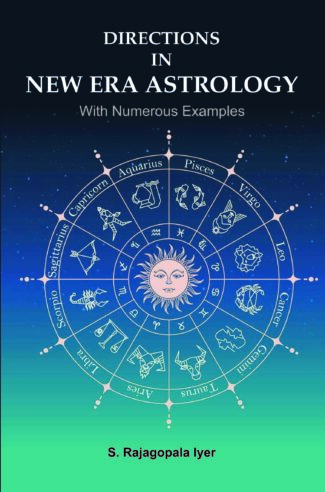
In this work the author explains an entirely new system of directions which, for ease of working and certainty of results, is unsurpassed by any of the extant methods. A new formula for longevity is included.
Directions in New Era Astrology is a veritable storehouse of all the methods employed in delineation prevalent in both systems. No single book furnishes such information on divers topics so very clearly and in such a masterly manner as this book. The author rightly and cogently points out the limitations in the several systems of direction in vogue either now or in the past. His keen powers of discretion and discrimination together with his experience of horoscopes for well over three decades have enabled him to develop and propound a method of directions which being a harmonious synthesis of all that is best in both the systems seems to fit in with the events and times of their occurrences in a better way than every other method. The book with horoscope diagrams neatly illustrated under various heads such as longevity, marriage, accidents etc. should be possessed by all students of astrology, the lay as well as the professional.
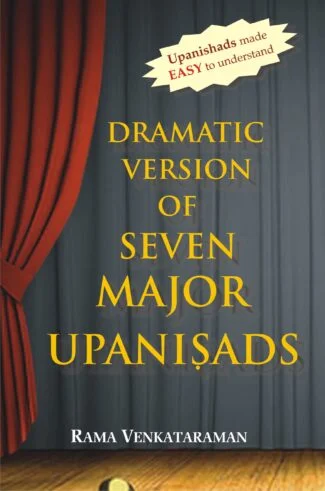
This book an English translation of the Tamil text expounds the wisdom contained in seven of the principal Upanishads in the style of short dramas. English transliteration and meanings of the Sanskrit verses are also included. The language is simple to follow which makes the Upanishads easily understandable by even a layman.
The Upanishads reveal the nature of true vidya: it is the knowledge which leads to the understanding of Brahman which alone is the Reality in the world of appearances. The dramas by Shri Mani Iyer based on the Upanishads render the meaning of the Upanishads in an interesting and captivating manner so that a wider audience can gain from the Upanishadic insight.
This book presents an English translation of Mani Iyers seven Upanishadic dramas, originally in Tamil, and includes English transliteration of the original Sanskrit verses. The dramas pertain to seven of the major Upanishads: Kena, Ishavasya, Prashna, Mundaka, Mandukya, Taittiriya and Katha. With reference to each drama, there is an introduction that reveals the major questions raised by the Upanishad, the manner in which the play proceeds, the nature of the story, its characters, and the conclusion of the play. The translation is simple to follow and possesses a rare clarity.
Because of the simple language and the clear meanings of the Upanishadic verses, this book will be valuable to readers in general, students in particular, and to those interested in knowing what our Upanishads contain and intend to convey.

This book an English translation of the Tamil text expounds the wisdom contained in seven of the principal Upanishads in the style of short dramas. English transliteration and meanings of the Sanskrit verses are also included. The language is simple to follow which makes the Upanishads easily understandable by even a layman.
The Upanishads reveal the nature of true vidya: it is the knowledge which leads to the understanding of Brahman which alone is the Reality in the world of appearances. The dramas by Shri Mani Iyer based on the Upanishads render the meaning of the Upanishads in an interesting and captivating manner so that a wider audience can gain from the Upanishadic insight.
This book presents an English translation of Mani Iyers seven Upanishadic dramas, originally in Tamil, and includes English transliteration of the original Sanskrit verses. The dramas pertain to seven of the major Upanishads: Kena, Ishavasya, Prashna, Mundaka, Mandukya, Taittiriya and Katha. With reference to each drama, there is an introduction that reveals the major questions raised by the Upanishad, the manner in which the play proceeds, the nature of the story, its characters, and the conclusion of the play. The translation is simple to follow and possesses a rare clarity.
Because of the simple language and the clear meanings of the Upanishadic verses, this book will be valuable to readers in general, students in particular, and to those interested in knowing what our Upanishads contain and intend to convey.
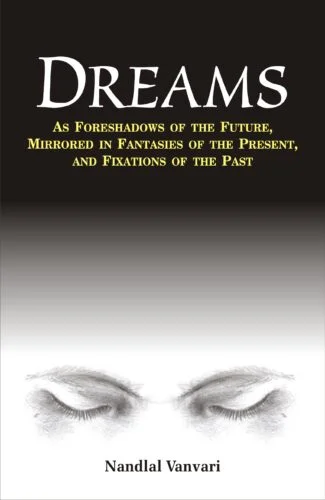
Dreams are generally viewed as displays of the subconscious and the unconscious, which know everything of the past, the present and the future, and constitute an interrelation between these. This book presents the viewpoints of scientists, psychologists and various religious and cultural traditions on the phenomenon of dreams.
This book is a study of the mysterious phenomenon of dreams. Dreams have fascinated mankind for ages. Civilisations over time and varied cultures have attempted to interpret the occurrence and meaning of dreams in different ways. Various theories have been extended from time to time to interpret this phenomenon. Dreams are generally viewed as displays of the subconscious and the unconscious which know everything of the past, the present and the future and constitute an interrelation between these.
The book analyses the states of thought, the sleep cycle and occurrence of dreams, presenting viewpoints of various religious and cultural traditions like the tantric view, that of the Guiana Indians, the Korean tradition, and so on. It discusses the views of scientists and psychologists on dreams, examining the beliefs of each school the Freud school, Jung school, Hall school among others in detail. It classifies dreams in different ways and deals with aspects of contemplation, emotions, and feelings in dreams. It also takes up dream healing and numerology, explaining how one can understand the structure of a dream and its significance and use it for achieving something in life. It contains accounts of dreams experienced by famous personalities in history which were closely linked to their real lives.

Dreams are generally viewed as displays of the subconscious and the unconscious, which know everything of the past, the present and the future, and constitute an interrelation between these. This book presents the viewpoints of scientists, psychologists and various religious and cultural traditions on the phenomenon of dreams.
This book is a study of the mysterious phenomenon of dreams. Dreams have fascinated mankind for ages. Civilisations over time and varied cultures have attempted to interpret the occurrence and meaning of dreams in different ways. Various theories have been extended from time to time to interpret this phenomenon. Dreams are generally viewed as displays of the subconscious and the unconscious which know everything of the past, the present and the future and constitute an interrelation between these.
The book analyses the states of thought, the sleep cycle and occurrence of dreams, presenting viewpoints of various religious and cultural traditions like the tantric view, that of the Guiana Indians, the Korean tradition, and so on. It discusses the views of scientists and psychologists on dreams, examining the beliefs of each school the Freud school, Jung school, Hall school among others in detail. It classifies dreams in different ways and deals with aspects of contemplation, emotions, and feelings in dreams. It also takes up dream healing and numerology, explaining how one can understand the structure of a dream and its significance and use it for achieving something in life. It contains accounts of dreams experienced by famous personalities in history which were closely linked to their real lives.

This attempts to examine how the corresponding ear-points can help in improving the body’s working. It also provides detailed explanations with tables and diagrams of various disorders that can be cured by using the acupuncture methods.
Among the many reflexology parts a human body has, ear is most unique and significant.
Ear is rich in nerve endings and placed at outer rim of the skull, vibrating with energy. In the ear body’s representation corresponds to a child in mother’s womb, curled in an upside down manner. Because of this the ear cure mechanism is also effective in curing problems originated in the womb.
Ear acts like the body’s radar reflecting its working precisely. When these reflex points are activated the sensitive ear nerves carry the return cure reflexes as electromagnetic waves to the organs and body parts, the body responds quickly and diseases are cured.
This is a wonderful effective nature cure through its remote control operation.
This book will serve as a guide to variety of readers especially those interested in traditional medicine and healing systems.
Nature’s gift to mankind.
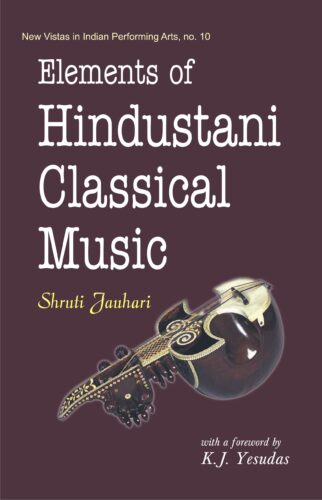
The book describes the history and evolution of Hindustani classical music, and terms and processes related with its performance. The musical instruments used in vocal singing, rags frequently presented in classical musical concerts, and famous gharana musicians have also been discussed. Very useful for the beginners of Hindustani Music.
Hindustani classical music, a jewel in the crown of the Indian musical tradition, has become increasingly popular in South India and abroad over the last few decades. This book attempts to present a detailed and comprehensive discussion of the fundamental concepts and aspects of Hindustani classical music. It begins with an account of the history and evolution of Hindustani classical music by taking up developments in a chronological order. It explains a number of terms and processes involved in the performance of Hindustani classical vocal music. In an interesting discussion, it mentions the various famous gharanas of the genre and deals with the life-histories of some of their eminent musicologists and singers. The musical instruments which are used in accompaniment to the vocal singing in Hindustani music are described. It also details the rags which are frequently presented in contemporary musical concerts, highlighting the important features of each.
The book will be useful to all those who wish to learn and acquire knowledge of Hindustani classical music. It will be of interest to all practitioners of Hindustani classical music.

The book describes the history and evolution of Hindustani classical music, and terms and processes related with its performance. The musical instruments used in vocal singing, rags frequently presented in classical musical concerts, and famous gharana musicians have also been discussed. Very useful for the beginners of Hindustani Music.
Hindustani classical music, a jewel in the crown of the Indian musical tradition, has become increasingly popular in South India and abroad over the last few decades. This book attempts to present a detailed and comprehensive discussion of the fundamental concepts and aspects of Hindustani classical music. It begins with an account of the history and evolution of Hindustani classical music by taking up developments in a chronological order. It explains a number of terms and processes involved in the performance of Hindustani classical vocal music. In an interesting discussion, it mentions the various famous gharanas of the genre and deals with the life-histories of some of their eminent musicologists and singers. The musical instruments which are used in accompaniment to the vocal singing in Hindustani music are described. It also details the rags which are frequently presented in contemporary musical concerts, highlighting the important features of each.
The book will be useful to all those who wish to learn and acquire knowledge of Hindustani classical music. It will be of interest to all practitioners of Hindustani classical music.

The book speaks about the usefulness and advantages of acupuncture and acupressure therapies. It also attempts to understand the concept of kundalini energy and its association with acupressure.
The Energy Pathways in our Body
Acupuncture and acupressure are drugless therapies that are safe, simple, economical and yet very effective for treatment and prevention of a range of common diseases and ailments. The volume is an attempt to understand acupuncture: its effects and the theory of yin and yang that forms the basis of acupuncture. It examines the causes of diseases and functioning of organs of the body. It discusses the nature of the acupuncture points present in the 14 channels and the way the activation of these points helps in treatment of various disorders in the body. With numerous drawings depicting the various body parts and acupuncture points, it deals with the specific acupuncture points for treating specific tissues. It also notes the symptoms of diseases of different organs.
The book details the advantages of the ancient therapy of acupuncture, especially as it doesn’t have side-effects and can be followed along with other modes of treatment like homoeopathy. There is also an attempt to understand the concept of kundalini energy and its association with acupressure. A list of important instructions for the acupuncture practitioners explains the correct procedures of applying pressure at points. A chapter on case histories mentions successful treatment given to patients with a range of ailments.
The book will be useful to scholars and students of medical science in general but particularly those interested in alternative medicines and medical therapies.
| There are no products |